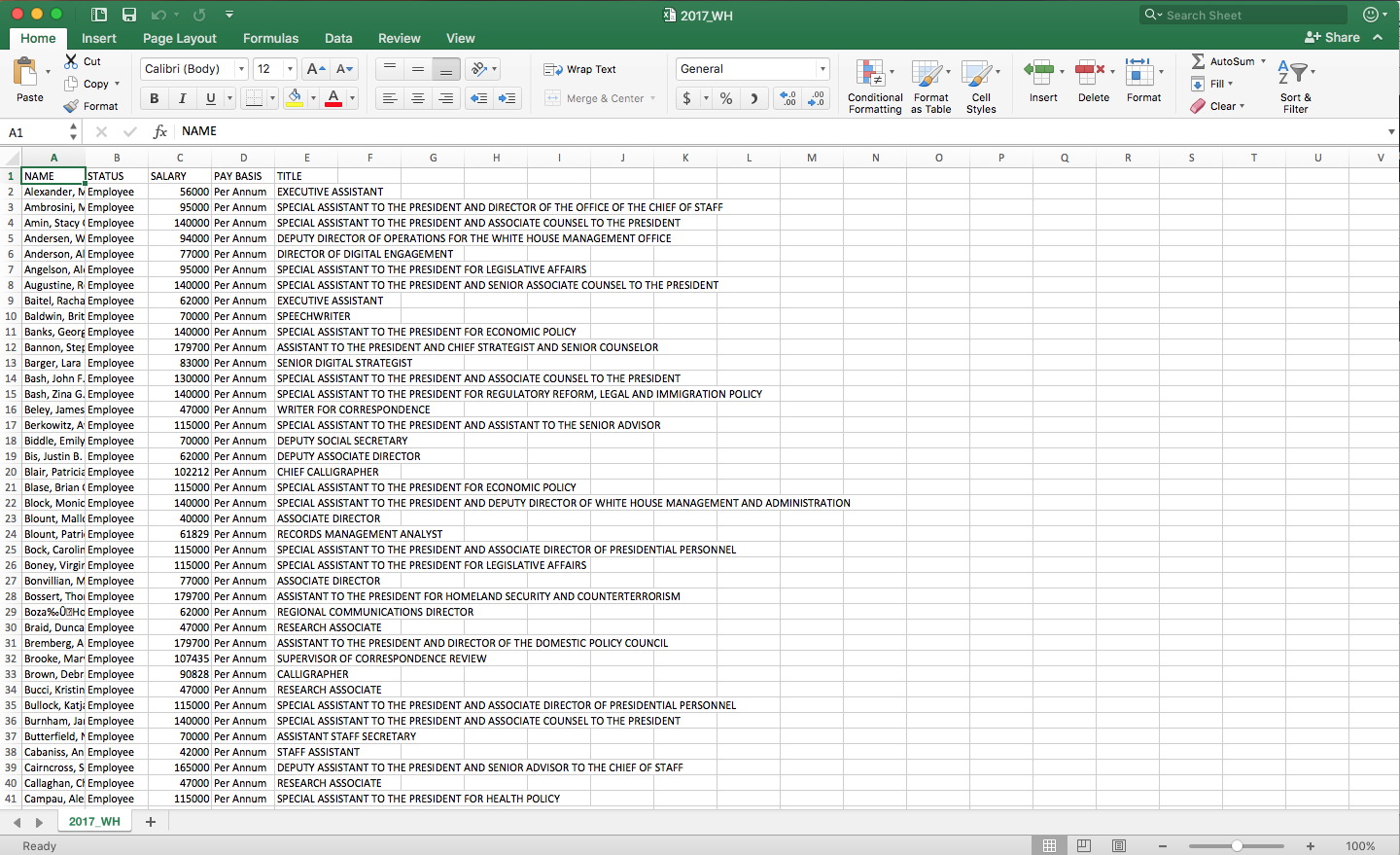I first saw Excel in action in the early 1990s at a gathering of journalists on the education beat, the annual conference of the Education Writer’s Association in Atlanta. This demo changed the way education reporters around the country handled the piles and piles of test score printouts handed over to us by our local school districts.
I was fascinated by Excel. And intimidated. How do I get from watching this spreadsheet demo to creating stories using this powerful calculator on steroids?
I tell my data journalism students at Ohio University: “Don’t freak out about the math.” If you can do middle school calculations, you can do this. I share the math phobia I had before learning computer-assisted reporting, and confess that I was never all that into computers. But as a working journalist, I knew I had no choice but to learn these skills. And as a faculty member, I have no choice but to teach these skills.
Accountants used the software, but more journalists saw the need to get trained and get access to vast amounts of data that began coming online. I’m no computer nerd, and you don’t need to be either. I have Investigative Reporters & Editors (IRE) to thank in jump-starting my data journalism skills. IRE took the lead in training journalists around the country, and these days much of that training is online.
By now we all know that we need to offer data journalism to our students. If you want to incorporate such training in your classes, the best thing you can do is attend an IRE or NICAR conference. At NICAR (National Institute of Computer Assisted Reporting) there are plenty of sessions from beginner to advanced, and some of them are repeated during the conference so you can go twice. Generally speaking, NICAR (held every March) is quite a bit techier than the traditional IRE conference in June, and there are lots more sessions for programmers. But there are still the basic, intermediate and advanced Excel sessions at NICAR. The IRE conference has similar Excel sessions with repeats. With a jump-start from IRE and a little extra time practicing over the holiday break, summer or weekends, anyone can excel at Excel (sorry). If you can’t get to a conference, go to the online training at the IRE website.
Tools to Teach Yourself
IRE’s online Excel module is super for hands-on instruction, step-by-step teaching guides and actual data you can download to work through real-life examples.
This module is the equivalent of two to three weeks of class. With this, you’ll learn from the very beginning, how to sort and filter. Then you move into basic calculations such as summing and averaging and then using rates and ratios. You’ll have built up your confidence when you move into calculating percent change over time and percent of the total. Within days you’ll be using PivotTables like a pro. With the above Excel skills, you have the bulk of what you need to know to add data to your teaching repertoire.
There’s also a whole section for educators on the IRE website, providing course materials and resources, including good stuff on Excel.
I encourage my students to keep a super-giant cheat sheet of formulas for things like calculating percent change over time. Another thing you can do if you get stuck – Google what you want to know. For example, search for “calculating percent change in Excel” and you’ll find a fabulous tutorial with screen shots.
Want to learn how to do a pivot table? Google will take you to a nice YouTube video demonstration. However, I recommend you use the IRE tutorials because those are geared toward journalists and the examples are actual journalism. Many of the general tutorials online use examples that a business might use such as tracking sales employees by state.
Additional Resources
IRE training director Cody Winchester is a really nice guy, so you might even call him up and ask him to bring one of IRE’s Watchdog Workshops to your town. In addition to the annual NICAR and IRE conferences, these regional workshops typically train beginners how to use Excel.
I also recommend the latest edition of Brant Houston’s Computer-Assisted Reporting: A Practical Guide, for those wanting to go more in-depth. Screen shots and easy tutorials are the hallmark of this tried-and-true text.
Mary Jo Webster of the University of Minnesota is the guru of Excel and maintains a fabulous web page of resources for journalists and educators. She gathered these materials and links for her data journalism class.
Lynda.com is another way to go if your university has a subscription to the e-course website. You can also try it free for 30 days.
Aimee Edmondson, Ph.D., is an associate professor at the E.W. Scripps School of Journalism where she teaches media law, data journalism and the history of American journalism. She was a reporter for about a dozen years, mostly at The Commercial Appeal in Memphis, covering education, poverty and politics. She also trains working journalists and educators in data journalism, most recently in Kazakhstan, India, Kenya, Germany and China.



It’s funny because the head of my department (I major in Journalism and Media Studies) told us that if we hate math then we were in the right place. I couldn’t have felt more at home with that comment lol. I didn’t know it was such a common thing amongst us Journalism and Media Studies students.